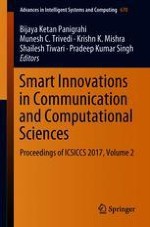2019 | OriginalPaper | Buchkapitel
Model Order Reduction Using Fuzzy C-Means Clustering and Particle Swarm Optimization
verfasst von : Nitin Singh, Niraj K. Choudhary, Rudar K. Gautam, Shailesh Tiwari
Erschienen in: Smart Innovations in Communication and Computational Sciences
Verlag: Springer Singapore
Aktivieren Sie unsere intelligente Suche, um passende Fachinhalte oder Patente zu finden.
Wählen Sie Textabschnitte aus um mit Künstlicher Intelligenz passenden Patente zu finden. powered by
Markieren Sie Textabschnitte, um KI-gestützt weitere passende Inhalte zu finden. powered by
